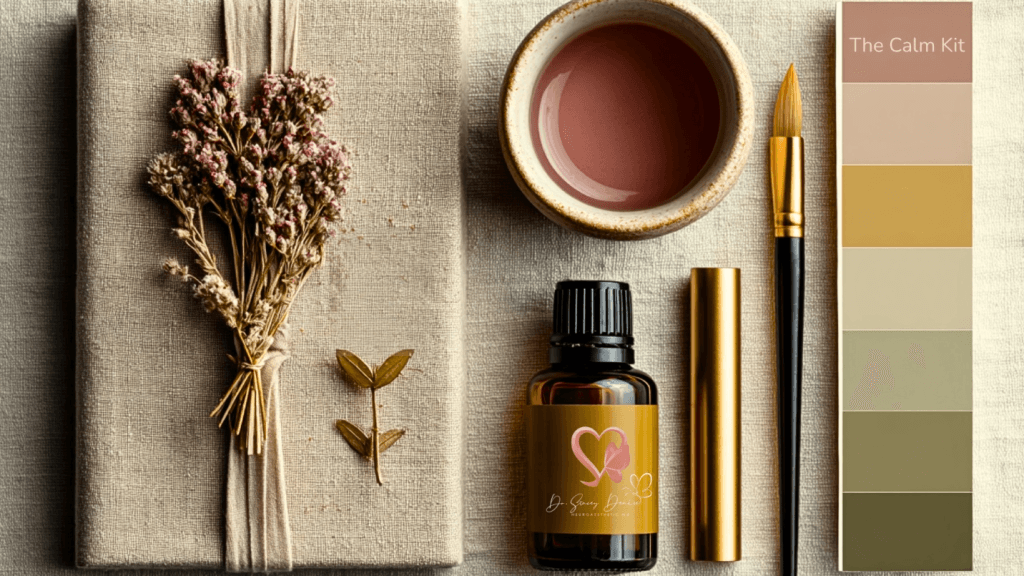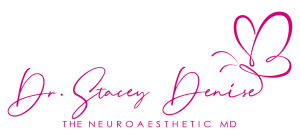The world often tells us that healing should feel like a breakthrough that’s loud, vibrant, linear. But for women who live with high-functioning autism, ADHD, alexithymia, and sensory sensitivities, healing rarely looks that way.
It’s not a breakthrough. It’s a soft return, to safety, to sensation, to self.
As a surgeon, neuroaesthetic designer, and therapeutic art coach, I have found my calling to help women, especially neurodivergent women, design healing rituals and environments that restore them to themselves. As I launch my practice rooted in Neuroaesthetic Lifestyle Medicine, I want to offer a truth that lives at the heart of my work:
“Your nervous system doesn’t need to be fixed. It needs to be understood, and gently redesigned.” —Dr. Stacey Denise
This inaugural blog post is a love letter and a lived framework for women whose needs are too often overlooked by conventional medicine.
The Science Behind the Sensory Self
In traditional healthcare, we’ve been taught to seek a pill to cure what ails us. But for women with high-functioning neurodivergence often carry invisible burdens: chronic stress, burnout, dysregulated sleep, emotional disconnection. Their autonomic nervous systems are often either hyper-activated or hypo-responsive, and their healing trajectories are rarely acknowledged in clinical spaces.
Research shows that sensory integration which is how our brain processes touch, sound, and sight, directly shapes emotional regulation and self-awareness (Lane et al., 2019). For neurodivergent women, environments that respect these sensitivities are essential for healing.
What the literature is beginning to catch up to, and what I’ve seen intimately in practice is this:
- Emotional regulation is sensory regulation. Studies show that sensory modulation—how we process touch, sound, and sight—directly shapes self-awareness and calm, especially for neurodivergent women (Bodison et al., 2008).
- Positive emotion is not always loud or joyful, it’s often quiet, steady, and embodied.
- Environment is medicine.
Drawing from the undoing hypothesis in psychology and layered with biophilic design, art-based healing, and olfactory neuroscience, we now understand that soft, positive states, and not high-stimulation euphoria, are what reset the body.

Designing a Lifestyle That Feels Like You
My philosophy in Lifestyle Medicine relies heavily on concepts from neuroaesthetics and how our brain interprets and responds to beauty and meaning. Not only visual beauty but is built on the idea that healing environments should feel like an extension of your sensory truth. They don’t ask you to change who you are, beautiful environments give your body permission to be well within your own design.
Here’s how we translate this into daily life:
1. Art as Emotional Access
For many neurodivergent women, emotion lives beneath the surface. Alexithymia can make it difficult to name what is felt. But art offers a different doorway. Neuroaesthetic research shows that engaging with art, whether through drawing, collage, or symbolic representation, activates brain networks involved in memory, emotion, and self-understanding (Magsamen, 2019; Vessel et al., 2013). This process helps integrate sensory and emotional experiences, offering a pathway to coherence even when words fail. For many neurodivergent women, this visual language becomes a bridge to emotional clarity and self-expression.
How to begin:
- Visual journaling as a non-verbal release.
- Color rituals aligned with mood (earth tones for grounding, ocean tones for calm).
- Artwork displayed in your home or workspace that mirrors internal states and invites self-reflection.
You don’t need the language for your feelings to honor them.
2. Biophilic & Intentional Space Design
The nervous system feels the room before the mind does. Neurodivergent bodies are deeply sensitive to air quality, light rhythm, visual clutter, and material textures. Healing starts with designing spaces that whisper peace.
Research confirms that environments with natural materials, gentle lighting, and organic textures lower stress hormones and support cognitive clarity. Biophilic design brings nature indoors through wood, plants, and natural light and in turn, activates the parasympathetic nervous system, helping the body shift from “fight or flight” to “rest and digest.” For neurodivergent women, these sensory anchors create a sanctuary where regulation and restoration become possible (Khatib et al., 2024, Garden on the Wall, 2025, Sayyed et al., 2025).
Integrate:
- Natural materials like wood, stone, woven fibers.
- Circadian lighting and blackout elements to support hormone balance.
- Clutter-free zones with layered textures that allow sensory rest.
Space is not just where you heal. It’s how you heal.
3. Soundscapes for Regulation
The vagus nerve responds to rhythm, resonance, and quiet repetition. Not every neurodivergent woman can filter noise the same way. Sound becomes architecture for safety. Rhythms like humming or nature frequencies resonate with the vagus nerve which is the body’s calming pathway, turning sound into a tool for resilience (Laderer, 2024 ).
Options to explore:
- Ambient soundtracks tuned to theta or delta frequencies.
- Nature-based audio (rain, rustling leaves, tide cycles).
- Vocal hums or breath-toned meditations to regulate from within.
Calm doesn’t have to be quiet. It just has to be consistent.
4. Aromatherapy as Anchoring
The olfactory system connects directly to the amygdala, the emotional seat of the brain. For women navigating emotional numbness, overstimulation, or trauma-based reactivity, scent becomes a subtle teacher. Scents bypass language to speak directly to the amygdala, the brain’s emotional core, making aromatherapy a whisper of regulation (Hall, 2024).
Create rituals with:
- Lavender or Roman chamomile for softening sensory overload.
- Peppermint or bergamot for focus and emotional lift in ADHD rhythms.
- Frankincense for spiritual grounding and deeper breath during transition times.
Scents don’t ask you to feel, they remind you that feeling is still possible.
5. Gustatory Satisfaction: Sensory Nourishment for Emotional Clarity
Why it matters:
For neurodivergent women, eating isn’t just about nutrition, it’s about regulation, safety, and identity. Many live in a body that reacts strongly to taste, texture, temperature, and scent, yet the standard nutrition pillar in Lifestyle Medicine often overlooks these subtleties. Honoring sensory preferences like, texture, temperature and flavor, builds body trust and emotional clarity, transforming meals into rituals of self-attunement (Marschall, 2025).
I call this pillar Gustatory Satisfaction, a reframing of nourishment that includes pleasure, flavor integrity, and texture sensitivity. Because the nervous system doesn’t heal when it’s force-fed. It heals when it’s met with attunement.
How to use it:
- Create flavor rituals that match emotional needs: citrus for clarity, herbs for grounding, sweet spices for comfort.
- Prioritize texture-friendly meals that respect sensory thresholds, soft, smooth, or layered dishes that don’t overstimulate.
- Use aesthetic plating and slow savoring as daily sensory mindfulness, your plate becomes your palette.
- Pair foods with corresponding aromas to deepen vagal activation (e.g., bergamot tea with cacao, or rosemary oil before a savory lunch).
In this model, food is not just fuel, it’s emotional design you can taste.
This Is Lifestyle Medicine for the Sensitive and Sovereign
What I offer through this practice is not a plan to fix you, it’s an invitation to realign your sensory world with your emotional one. This is where medicine meets movement, where art becomes a therapeutic ally, and where science listens to the subtle.
In this space, you’re not a patient. You are the oracle.
Whether you arrive overstimulated, emotionally distant, or simply tired of being misunderstood, know this:
There is a way forward that feels like you, not someone else’s idea of recovery.
Let’s design it, together.
Welcome to the practice. Welcome home.
Dr. Stacey Denise
Board-Certified Physician | Neuroaesthetic Strategist
Founder, The Color Reset Method™ & The Neuroaesthetic Reset™
www.drstaceydenise.com | @drstaceydenise










